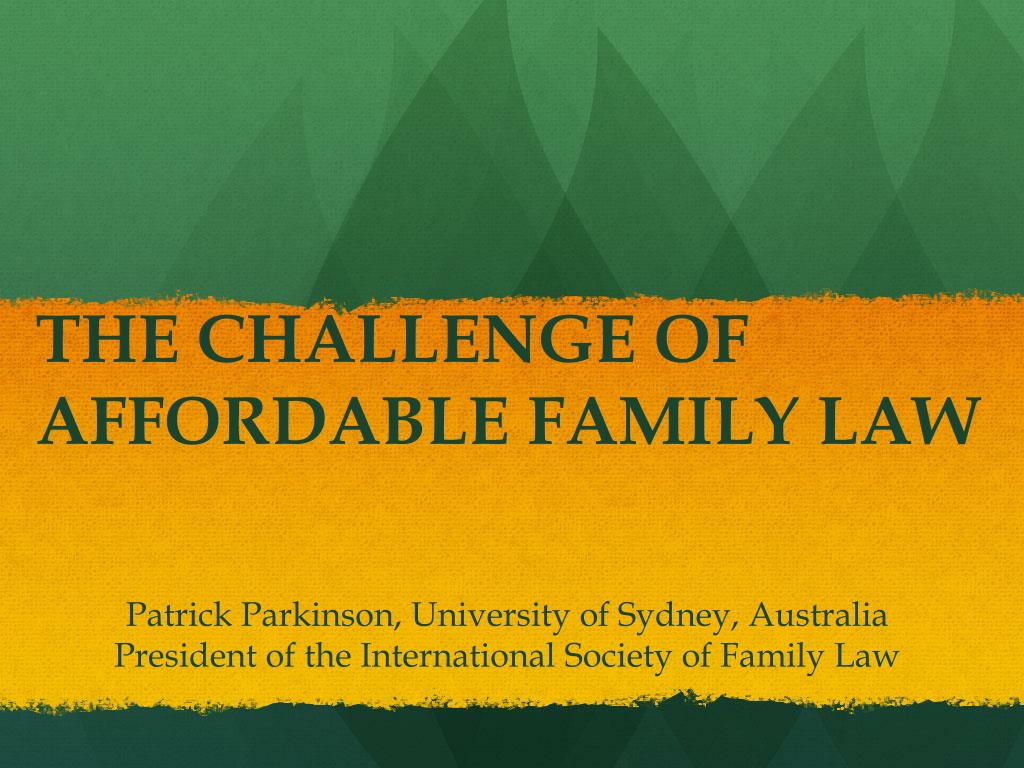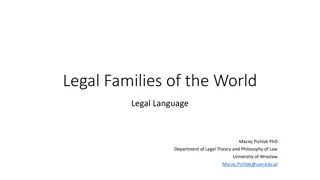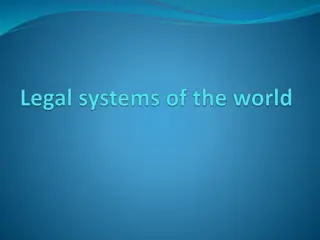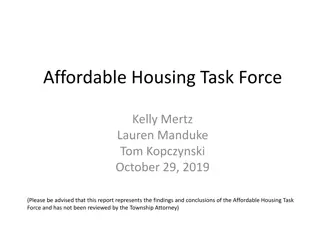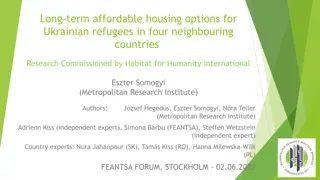Challenges in Affordable Family Law Systems
The challenge of providing affordable family law services is highlighted by the increasing demand for family justice systems worldwide. Reasons for stressed systems include changing patterns of family formation, the growth in single parents, and the breakdown of traditional custody models. The rise in ex-nuptial births and the shift away from marriage as the primary basis for partnerships also contribute to the complexities faced by family law courts.
Download Presentation

Please find below an Image/Link to download the presentation.
The content on the website is provided AS IS for your information and personal use only. It may not be sold, licensed, or shared on other websites without obtaining consent from the author.If you encounter any issues during the download, it is possible that the publisher has removed the file from their server.
You are allowed to download the files provided on this website for personal or commercial use, subject to the condition that they are used lawfully. All files are the property of their respective owners.
The content on the website is provided AS IS for your information and personal use only. It may not be sold, licensed, or shared on other websites without obtaining consent from the author.
E N D
Presentation Transcript
THE CHALLENGE OF AFFORDABLE FAMILY LAW Patrick Parkinson, University of Sydney, Australia President of the International Society of Family Law
Traffic jams Stuck in traffic jams The helicopter view The traffic jams of family justice Overwhelmed courts, long delays, stressed system Cuts to government funding in many countries or funding not keeping pace with levels of demand Why, and what can we do?
The problem of increasing demand E.g. Britain, contact (visitation) orders increased more than fourfold between 1992 and 2008 US 7 states: 44% increase in custody filings between 1997 and 2006 follows 43% increase in 1990s. Australia: number of contact applications nearly doubled between 1994 and 2000 Similar trends in Europe eg. France and Denmark Delay increases litigation costs and frustration
Reasons for stressed family justice systems Growth in number of parents who need the courts to resolve family disputes. outworking of the growth in the number of children born to single parents or into cohabiting relationships. Old model on which separation and divorce were premised - the idea that custody should be awarded to one parent to the exclusion of the other, with access to the loser - has irretrievably broken down Fathers want to be much more involved in parenting after separation
Changing patterns of family formation and dissolution Observed throughout much of Europe, North America, South America Marriage no longer seen as the predominant basis for intimate partnerships and childrearing In some South American countries, more people of child-bearing age are living in cohabiting relationships than are married e.g. Peru, Columbia France, 26 percent of adults in the 18 to 49 age range were cohabiting, while 39 percent were married
Parenthood: ex-nuptial births Britain: 47.5% USA 41% Belgium, Bulgaria, Estonia, France, Iceland, Slovenia, Norway, and Sweden more than 50% Colombia 84% Peru 76% Nicaragua 72% Brazil 66% Majority in cohabiting relationships but much less durable than marriage Many born to single mums 16% in Britain and Irelad, 24% in USA.
The demise of sole custody Model of custody to one and access to the other is no longer widely accepted Emphasis on involvement of both parents after separation Smorgasbord of options for post-separation parenting from limited contact to equal time More to argue about
Fathers wanting more involvement Significant changes in the ideal of fatherhood, with a greater emphasis on emotional closeness and active involvement with the children Greater involvement in parenting in intact relationships More fathers want to assist in the parenting role after separation increasingly as primary carers
Governmental responses to demand Family law professionals call for more resources for traditional model of adjudication Pleas often fall on deaf ears in government Traditional model of adjudication not suited for continuing family relationships Competing demand for resources eg criminal law The harbour bridge problem more courts a poor investment of scarce public funds? Limiting resources for courts forces people to settle
Towards different solutions The downside of downsizing Need to think laterally about those cases that do not need fact-finding on violence, abuse or fitness to parent Many disputes between fit parents, most of which will, eventually be resolved without adjudication, but at high cost to the parties if they are paying for private lawyers - and to the government in terms of the public costs of the legal system.
Five directions for reform Creating different pathways for people to get help Reducing discretion in family law cases Providing guidance to assist resolution in parenting disputes Simplifying procedures for the more straightforward cases which require adjudication Addressing the need for defensive legal practice to reduce legal costs
Creating different pathways for people to get help What is needed is to create different pathways for parents who have separated, with litigation being just one of those pathways Different pathways, not just different programs e.g the English experience Mediation and the litigation freeway Early intervention: Family Relationship Centres Highly visible and accessible centres - sources of help soon after separation, based in communities not courts
Reducing discretion in family law cases We need to get over the idea that we can provide individualized justice - except to the very few Centripetal and centrifugal laws Property division and child support Canada: the spousal maintenance guidelines Rough justice = affordable justice
Providing guidance to assist resolution in parenting disputes The best interests of the child must be the paramount consideration But few cases and not typical cases No presumptions about time More guidance from appeal courts Standardised parenting regimes and draft orders for different patterns of care must be widely available Factors to consider about shared parenting Other cases questions for mediators to discuss with parents
Simplifying procedures for some cases Most people cannot afford the epic trial Denmark the County Governors Offices Oregon Deschutes County. Informal domestic relations trial Rules of evidence are excluded and the parties engage directly with the judge. Only the judge asks questions of each person.
Addressing the need for defensive legal practice Family law reform requires tort law reform Unbundled legal services Limited purpose representation The risks involved for practitioners The limits of a lawyer s liability in professional negligence if they provide unbundled legal services
Conclusion Paper available at www.iflhome.org Publications Recife papers
